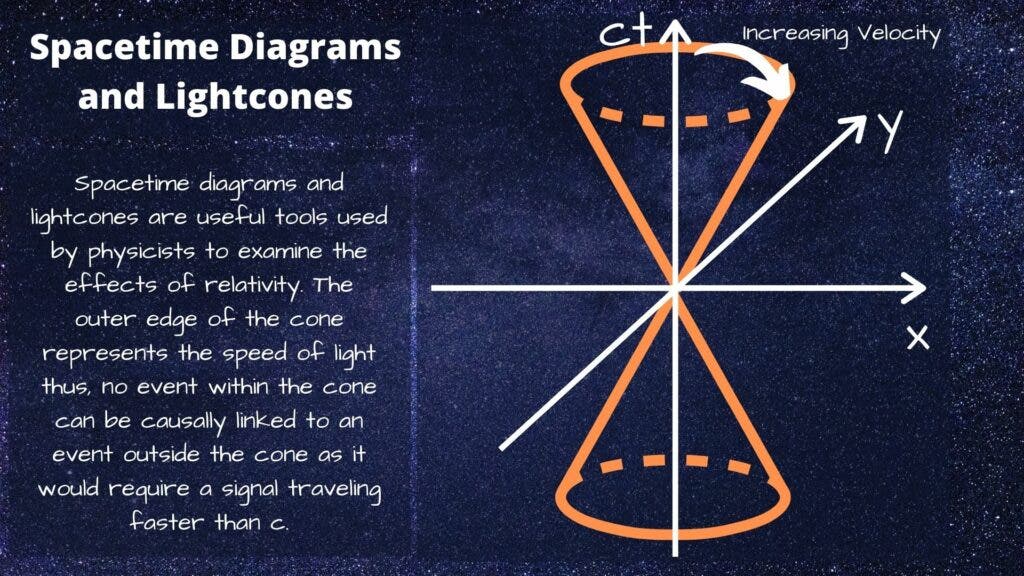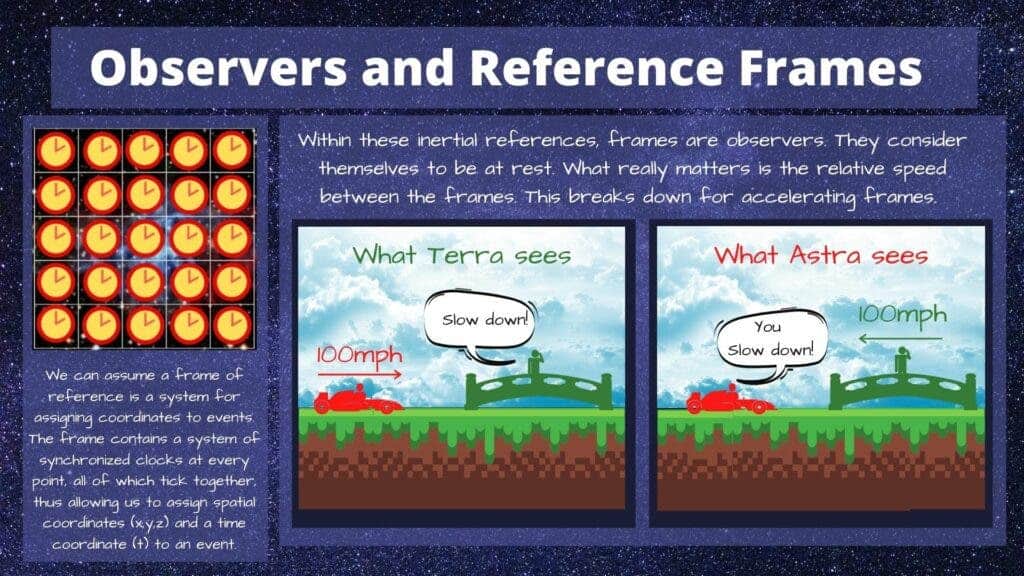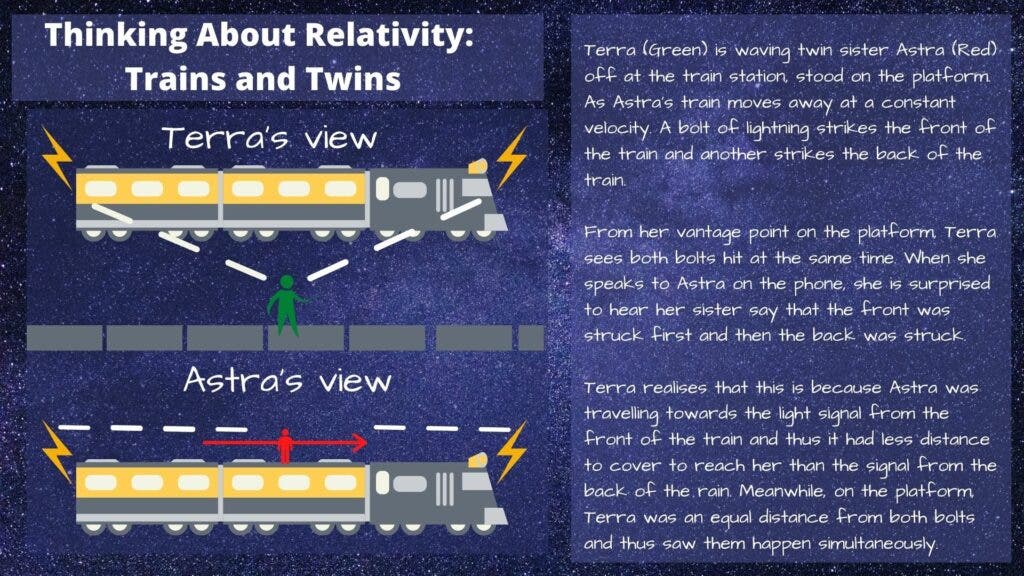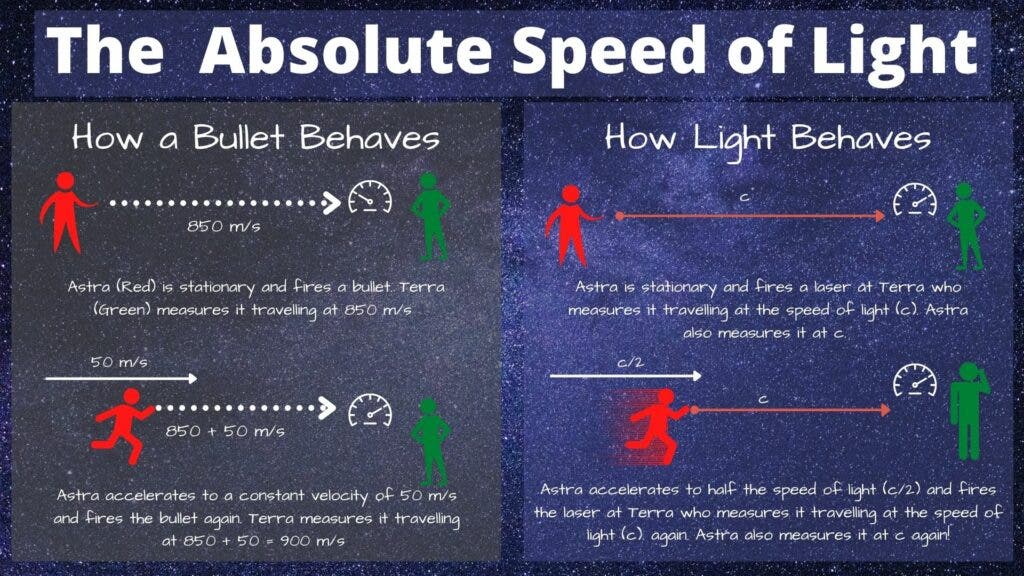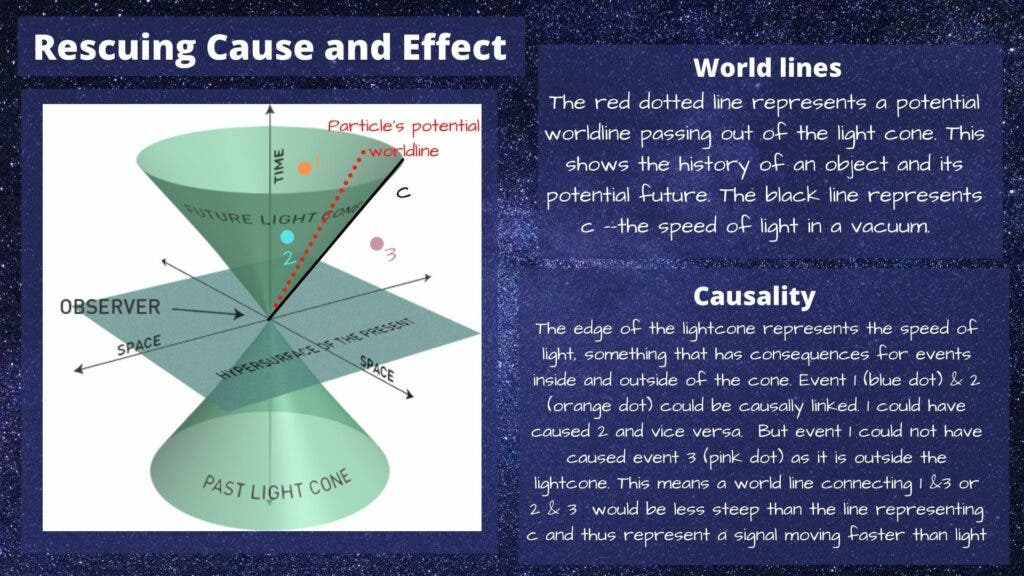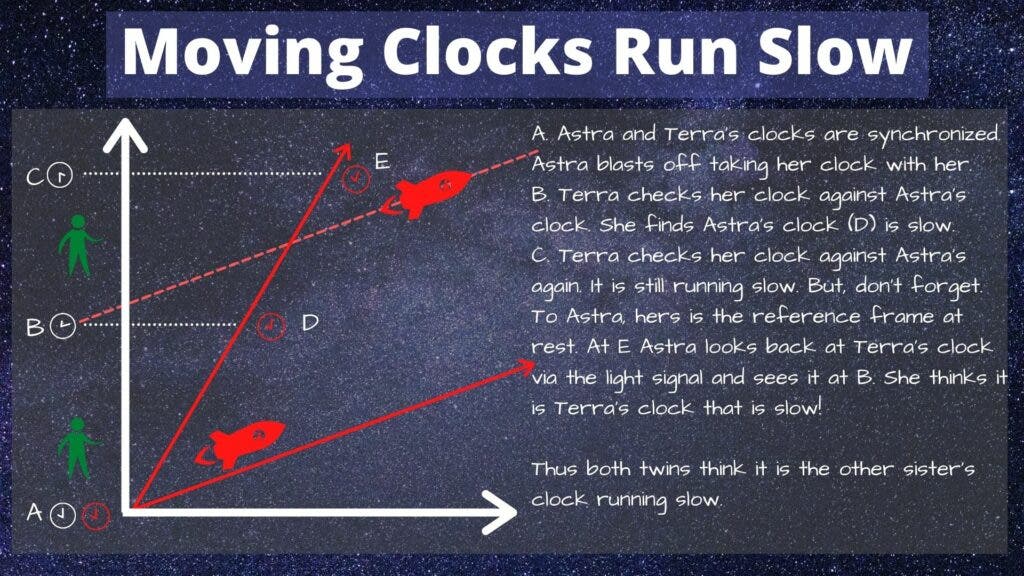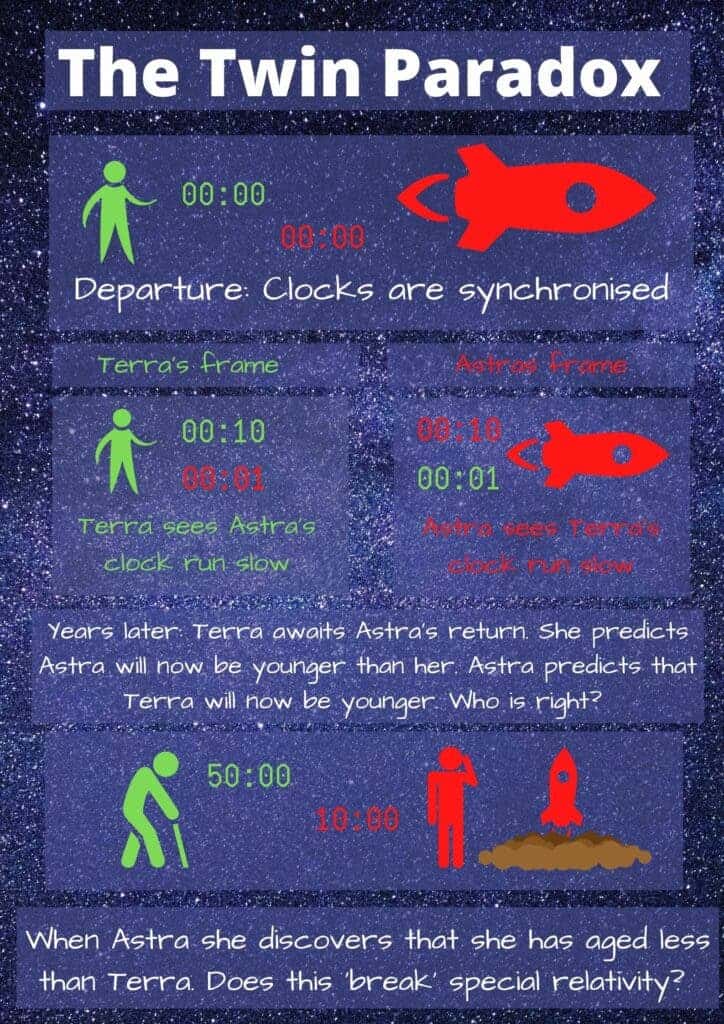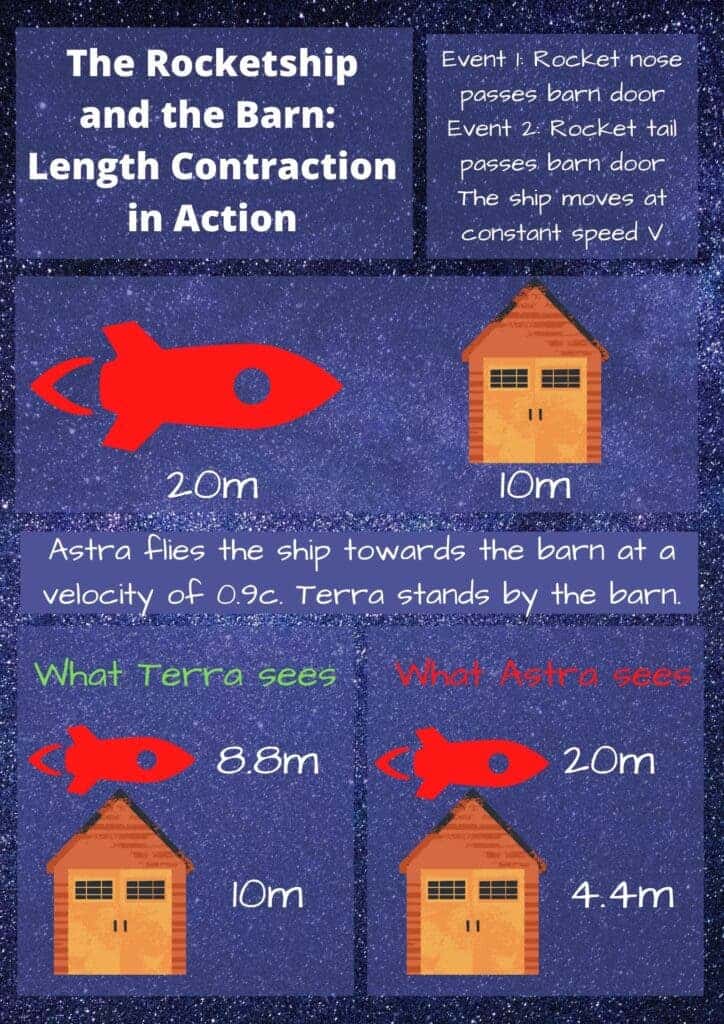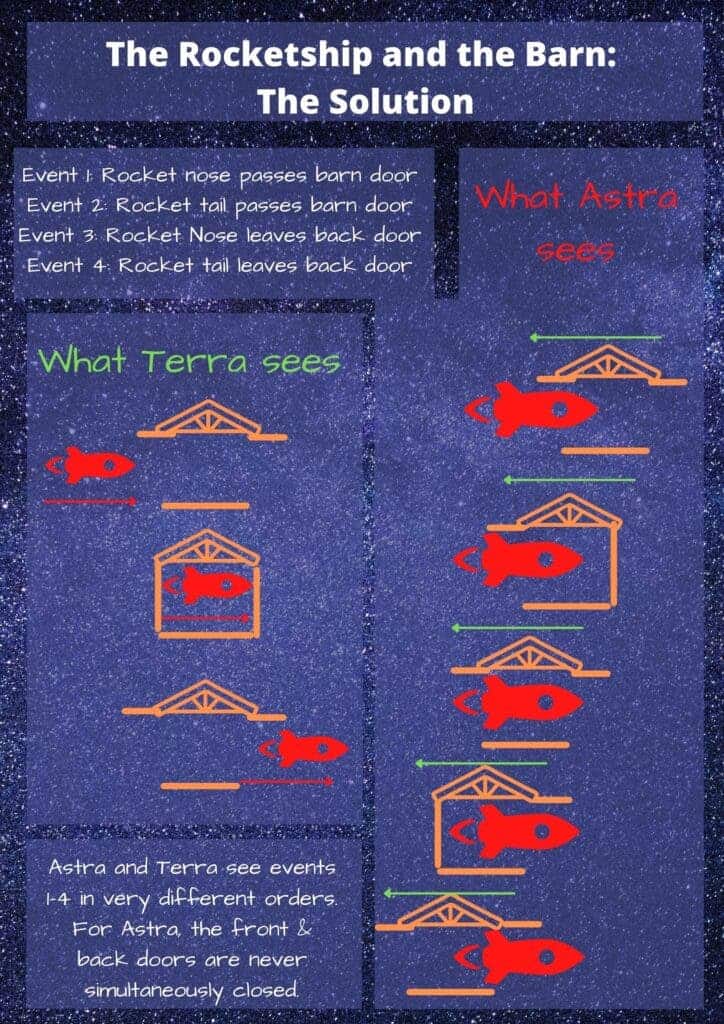Imagine a passenger sat aboard a train. They awake from sleep and see another train moving past at a constant velocity. The passenger is momentarily confused. Which train is moving? Theirs or the one opposite?
In 1905 this idle thought and the concept of relative motion would inspire one of science’s most important theories. Over a series of four papers, Albert Einstein, a patent clerk in Bern, Switzerland, would change physics forever. The theory encapsulated by those papers–special relativity– would reformulate not just the laws of motion, but the relationship between matter and energy, and the very nature of time and space themselves.
Thanks to special relativity what was once immutable and unchanging became an active player in the events of the Universe. Something that Albert Einstein, the theory’s father would only expand upon in the future. But, before that, uniting space and time as one entity–spacetime–would have some remarkable consequences for these previously separate aspects of the Universe and for the mechanics that govern its events.
Spacetime, Inertial Reference Frames, and Relative Motion
Spacetime is filled with events–it would be rather boring if it wasn’t. These events can be as mundane as egg crack on the kitchen floor, to events as powerful and violent as the eruptions of supernovea.
Within spacetime are inertial reference frames–areas filled with synchronised clocks that allow events to be given coordinates. If one inertial frame exists then an infinite amount exist in relative motion.
In each inertial reference frame is an observer. For the sake of our thought experiments, these will be twin sisters Astra and Terra. One important thing to note, just like in the train analogy which opened our explorations, these observers believe that they are stationary in their frame.
Twin sisters Terra and Astra borrow their father’s sports car to demonstrate this. Terra stands on a bridge as Astra races towards her in her father’s car at a steady velocity of 100mph. Terra will see Astra’s reference frame approaching at this speed and she and the bridge are at rest As far as Astra is concerned, she considers herself and the car at rest, and that it is the bridge that races towards her at 100mph.
This only holds if these frames are inertial–not accelerating or turning which is counted as acceleration in physics. Think about it like this; in the train analogy, the passenger doesn’t know if their train is moving or if it’s the train opposite. If the train was accelerating–the passenger would ‘feel’ this acceleration and thus know which train is moving.
The exclusion of accelerating frames will become important later.
Let’s now explore the consequences of relative motion on how observers measure the events that occur around them.
Thunderstruck!
Years later, Terra and Astra’s father finally ungrounds them both for the destruction of both his car and a local bridge, meaning Terra can escort Astra to the local train station as she embarks on a journey to astronaut training camp. As the train pulls away from the platform and achieves a constant velocity, lightning strikes it at the front and the back, getting Terra–a theoretical physicist–thinking about how she and her twin sister would have experienced the event.
This encapsulates a revolutionary aspect of Einstein’s 1905 theory, the idea that observers in different reference frames experience time and space differently. So much so that observers in different reference frames can disagree on the order in which events occur.
Terra sees event 1-the front of the train struck by lightning, occur at the same time as event 2-the back of the train struck by lightning. Astra, however, sees event 1 occur before event 2.
But what about the law of causality? What is to prevent event A that causes event B being seen after that effect in a particular frame and thus in that reference frame having the consequence of putting effect before cause?
This might not sound like a problem, but say Astra sees B before A, she could potentially send a signal to Terra about B that is received before A has even happened. Maybe quick enough that Terra could actually stop A from occurring?
Terra ponders this as she screams at her more adventurous sister to sit inside the train rather than stand on its roof.
Transformations in Special Relativity
When examining the rules that Einstein would need to transform coordinates from one inertial reference frame to another, the physicist discovered that they were identical to the transformations developed by Dutch physicist Hendrik Lorentz.
Lorentz had arrived at these transformations whilst considering James Clerk Maxwell’s laws of electromagnetism. This finding excited Einstein, as a major reason he began speculating about the nature of light and the speed at which it travels was a result of Maxwell’s laws of electromagnetism.
These laws didn’t just unite the phenomenon of electricity with magnetism — creating electromagnetism (over the coming decades, physicists will get much more adventurous with nomenclature) — Maxwell found that electromagnetic waves travelled at 3.0 x10 ⁸ m/s — exactly the speed of light.
Thus, Einstein’s predecessor had found that light is an electromagnetic wave.
The use of the Lorentz factor in the transformations of special relativity leads to a stunning consequence. The fact that nothing with mass can travel at the speed of light. But the use of Maxwell’s equations will deliver another, equally impressive aspect to the nature of light and its speed in a vacuum.
The fact that it is absolute.
Absolute C
As well as proving the universe with a speed limit, the speed of light in a vacuum also proves counter-intuitive by taking the same value in all reference frames. Astra and Terra will use a gun and laser pen to demonstrate this phenomenon.
Clearly, if light behaved like any other projectile Astra who is in a reference frame travelling at c/2 would measure the speed of light racing away from her at c, whilst Terra should register it travelling at c + c/2. But, she doesn’t she also registers it as travelling at c.
The reason this should be the case is, Einstein reasoned, that if it were different then if he raced a beam of light at c, he could turn and see that light as a stationary electromagnetic wave, something that is forbidden by Maxwell’s laws of electromagnetism.
It’s the invariance of c and the fact nothing can accelerate beyond it that saves causality and ensures that an effect cannot precede a cause.
Thus, in special relativity, not everything is mutable between reference frames. In fact, the first of two postulates Einstein adopted when thinking about relativity is the fact that the laws of physics should be the same in all inertial reference frames.
Terra jots down her ideas about how what she has learned from here experiments thus far whilst mulling over the fact her sister runs much faster since being on a train that was struck by lightning.
The Two Postulates of Special Relativity
The idea that light travels at c in a vacuum in all frames to all observers gives Einstein his second postulate for special relativity. The speed of light in a vacuum has the same constant value (3.0 x 108 m/s) in all internal reference frames.
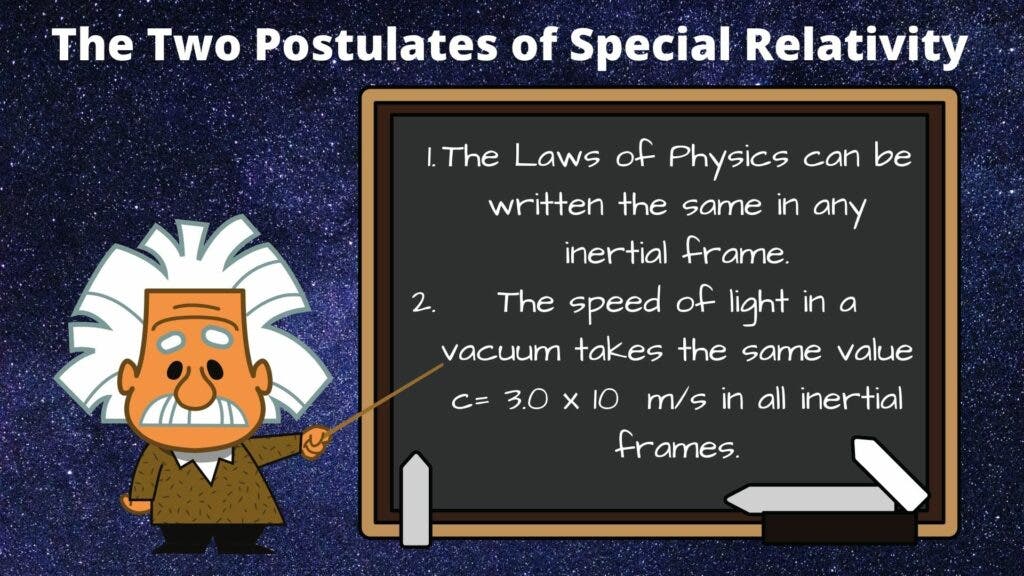
Exploring this second postulate, Terra wonders how is it possible that both she and Astra could register the same value for the speed of light in a vacuum?
Something must be different between the two frames. It turns out that there is a difference and Einstein realised that it has stunning consequences for our concepts of space and time. Or more precisely for Einstien’s united entity, spacetime.
Time Dilation: Physics on Flexitime
In special relativity, it is accepted that ‘moving clocks run slow.’ To put this in a more understandable way, an observer in an inertial reference frame will observe the clock in another inertial reference frame that is in relative motion moving slowly.
The idea that ‘moving clocks run slow’ gave rise to one of science’s most famous thought experiments. The so-called ‘Twin Paradox’. The paradox element of the example arises from the idea that if Terra sees Astra’s clock run slow, and Astra sees Terra’s clock run slow, what happens when the twin sisters meet back up?
Surely Astra will expect Terra to be younger upon her return, whilst Terra will expect Astra to be younger?
To demonstrate this idea Astra will once again embark on a journey in her ship, but this time rather than a short jaunt she will leave for a distant star system, a journey that will separate the twins for many years.
The answer to this paradox lies in the fact that special relativity works only in non-inertial frames–that is frames that aren’t accelerating. Whilst Terra’s frame remains in constant motion, it’s clear that Astra’s frame MUST accelerate at points. For example, Astra has to turn her ship around to return to earth, that means that even if she manages to do so with slowing down (deceleration also counts as acceleration in physics) circular motion is acceleration too!
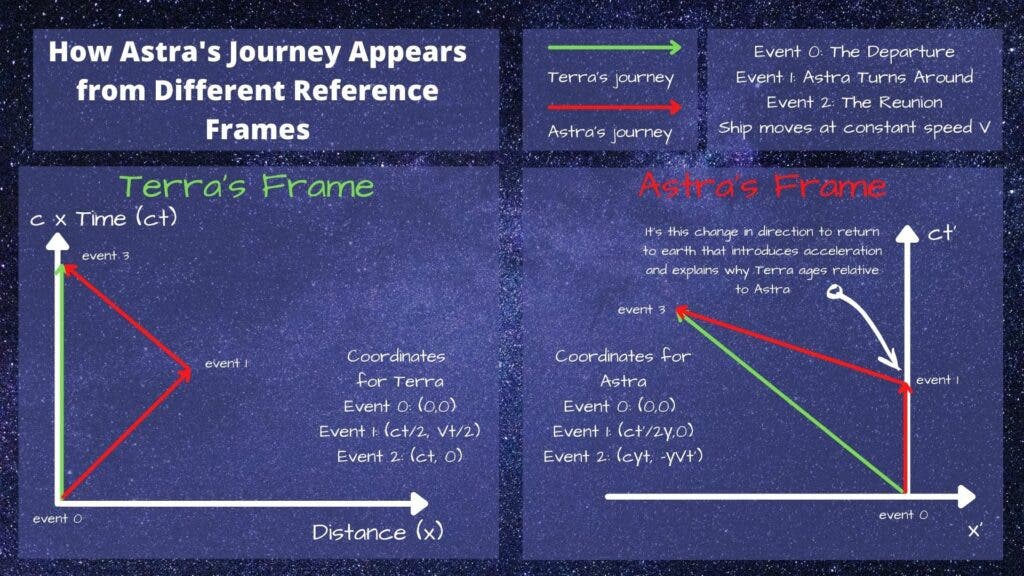
A practical demonstration of the effect described in the twin paradox thought experiment can be seen in particle accelerators. As particles that decay in incredibly short lengths of time are accelerated to speeds approaching that of light researchers can measure them lasting for longer than they should. Of course, if a scientist could race alongside the hurtling particle this scientist would measure it decaying in the usual amount of time.
There’s another factor to special relativity that affects that can be seen with short-lived particles.
Muons are short-lived particles that are created in Earth’s upper atmosphere when it is struck with cosmic rays, that exist for 2.2 microseconds. Even when factoring in time dilation and the incredible velocity of muons–0.98c or 98% the speed of light–very few of these particles should survive long enough to strike the surface of our planet. And yet far too many do just this.
Something else must be working to enable the muons to reach the ground. What if, as well as granting them extended time special relativity could also shorten the distance that the electron-like particles have to cover?
Length Contraction: Short on Space
Possibly an even more counterintuitive idea than time dilation is length contraction–or Lorentz contraction. Whilst time can sometimes seem to us like an abstract concept (who hasn’t experienced the seemingly stretched time of a workday or a school day?) length–distance–is something we can see and measure quite easily. The idea that you could take a solid iron rod and measure it to have different lengths depending on the speed at which it moves and whether you are moving with it or not sounds absurd.
But it’s correct.
Of course, like time dilation we don’t see these effects in everyday life as the velocities required to cause length contraction are close to the speed of light in a vacuum. Fortunately, Astra and Terra are on hand to demonstrate again as its time to put the rocket ship away. In their attempt to park Astra’s ship in Terra’s barn they discover another paradox.
Clearly that from the perspective of Terram, the ship will fit in the barn, albeit briefly. Astra disagrees.
So what is the solution?
Obviously, the ship isn’t going to fit when it is stationary, but the sisters want to know if there is a point when the whole ship will be inside the barn. Fortunately, the barn also has back gates so they can run the experiment without too much damage.
The key to solving this paradox is simultaneity. Because events can occur in different orders for observers in different reference frames, it’s quite possible for Terra and Astra to disagree whether the rocket was ever fully inside that barn.
This is the spatial equivalent of the twin paradox and the answer to the question ‘which sister is correct’ in both cases is the same: both.
What both of these effects tell us is that in special relativity there is no reference frame that has ‘privilege’ over another.
But There’s More…
Thus far we’ve focused our discussion on how Einstein’s theory of special relativity affected how we think about the world, but in terms of changing the world, no element of this theory had as much impact as the matter/energy equivalence. It was this concept and E=mc2 the equation that embodies it, that would give rise to the atom bomb and the mushroom cloud that is etched in our minds as the ultimate symbol of destruction.
It is cruelly ironic that a lifelong pacifist like Einstein will forever be linked with man’s most destructive impulses.
But, as the sun sets over the shattered doors of Terra’s barn, Astra suggests to her now elderly twin that this is a discussion for another day.
Sources and Further Reading
Lambourne. R. J., ‘Relativity, Gravitation and Cosmology,’ Cambridge University Press, [2010].
Cheng. T-P., ‘Relativity, Gravitation and Cosmology,’ Oxford University Press, [2005].
Fischer. K., ‘Relativity for Everyone,’ Springer, [2015].
Takeuchi. T., ‘An Illustrated Guide to Relativity,’ Cambridge University Press, [2010].
